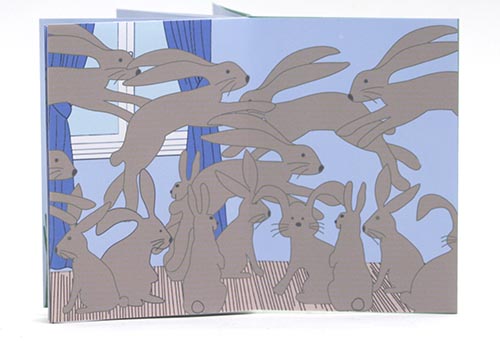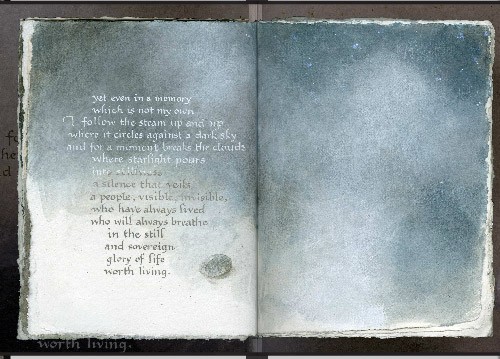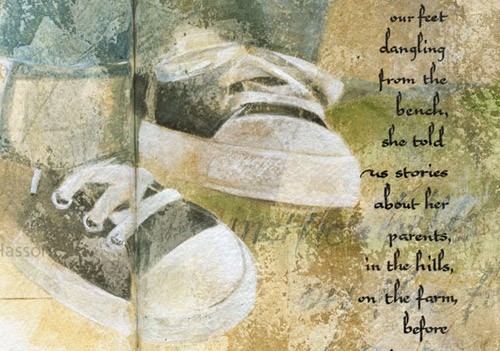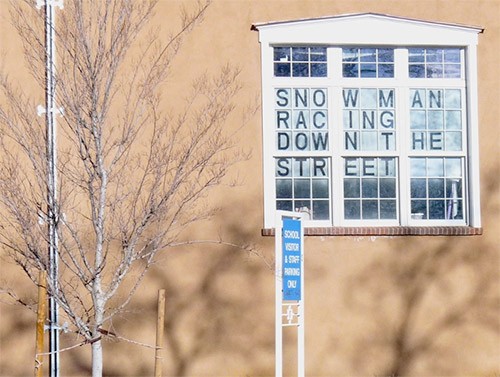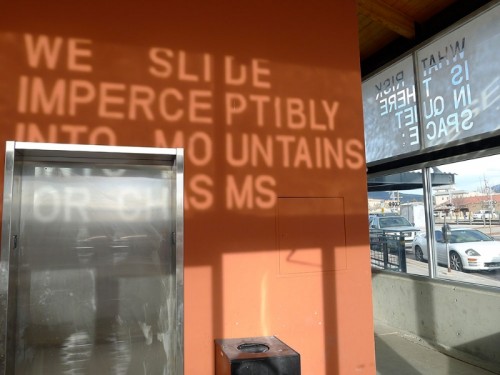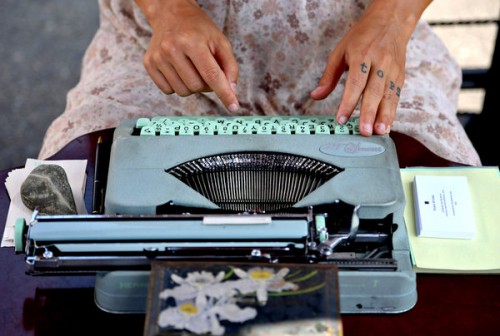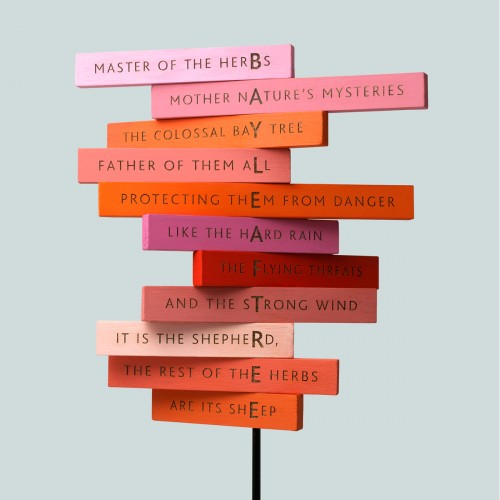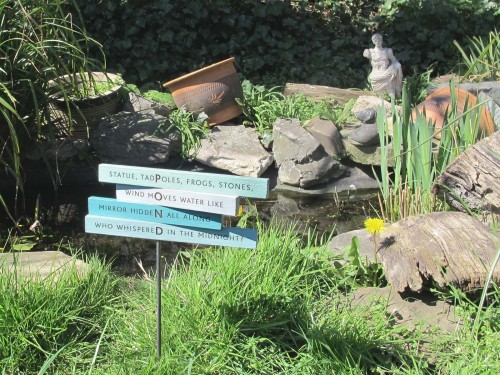The March word for my prompt challenge book group was jump, a word with no less than 24 definitions, according to the OED. Chess was a theme used by half the people in my group. Laura had cut-offs from a book she’d made with chess imagery, and used them to make a book with nearly 200 pages. Each page was numbered and many had instructions of the variety “jump to page N” which created a sort of random walk through the book. Julia made a pop-out book, where parts of the images jumped off the pages as they were turned. And Suzanne rediscovered and finished a book she’d started several years ago with verbs about escaping—jump, fall, spring…
![]() I had a hard time getting going this month. I wanted to try handwriting whatever text I chose, but couldn’t come up with a theme. It’s spring, my garden is beginning to show life, and the bunnies will soon be back to feast on the new tiny shoots in my backyard. So I finally settled on rabbits and immediately found this promising stanza in the poem Darwin’s Bestiary by Philip Appleman.
I had a hard time getting going this month. I wanted to try handwriting whatever text I chose, but couldn’t come up with a theme. It’s spring, my garden is beginning to show life, and the bunnies will soon be back to feast on the new tiny shoots in my backyard. So I finally settled on rabbits and immediately found this promising stanza in the poem Darwin’s Bestiary by Philip Appleman.
3. THE RABBIT
a. Except in distress, the rabbit is silent,
but social as teacups: no hare is an island.
(Moral:
silence is golden—or anyway harmless;
rabbits may run, but never for Congress.)
b. When a rabbit gets miffed, he bounds in an orbit,
kicking and scratching like—well, like a rabbit.
(Moral:
to thine own self be true—or as true as you can;
a wolf in sheep’s clothing fleeces his skin.)
c. He populates prairies and mountains and moors,
but in Sweden the rabbit can’t live out of doors.
(Moral:
to know your own strength, take a tug at your shackles;
to understand purity, ponder your freckles.)
d. Survival developed these small furry tutors;
the morals of rabbits outnumber their litters.
(Conclusion:
you needn’t be brainy, benign, or bizarre
to be thought a great prophet. Endure. Just endure.)
Here are a few pages from the book I made. It was quite different to write the lines without the help of the grid I’ve been practicing with. I notice I went back to non-slant almost immediately. And despite trying to work out the line length and kerning ahead of time, I need more practice on that as well!
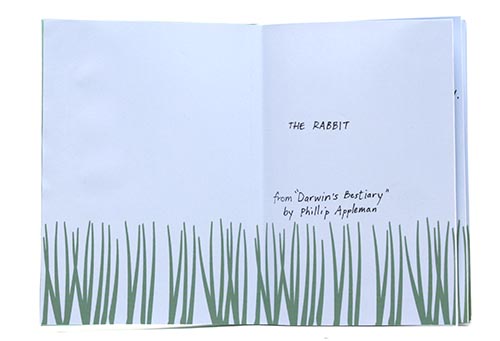
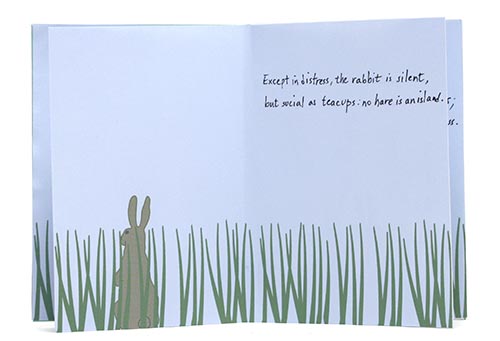
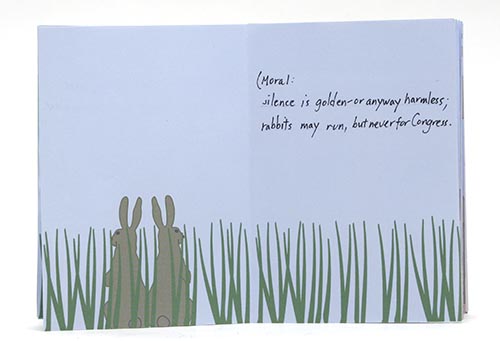
The book continues with jumping rabbits…
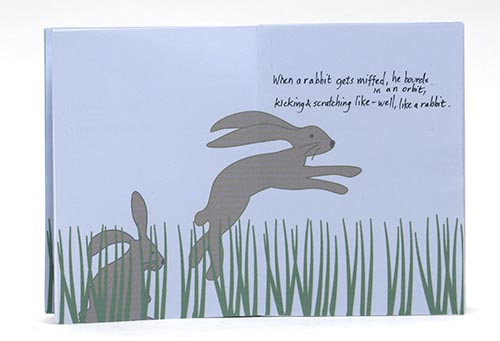
And now the rabbits are in Sweden, starting to multiple
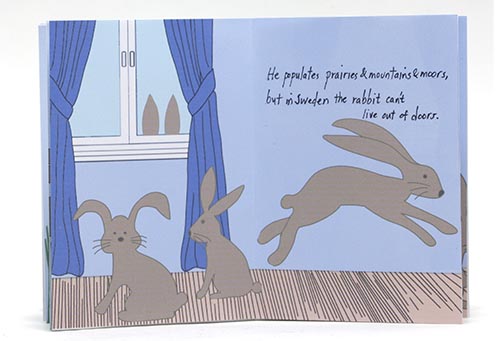
The book & poem continue, and it ends with the rabbits taking over (or enduring….)
